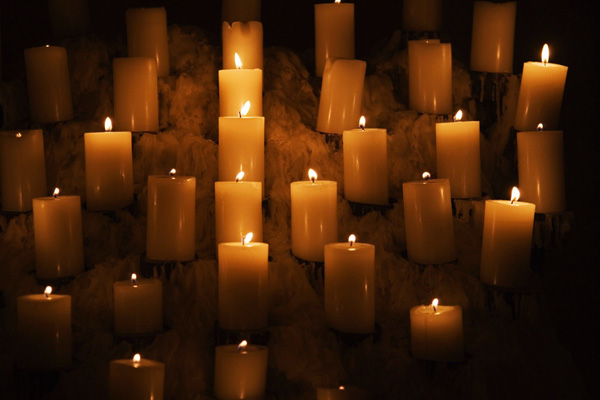Iíll tell you where to put your candlesticks, young artists
Zane Pocock
In the most stunning lack of individual style the art world has ever seen, we are currently witnessing a huge proliferation of contemporary New Zealand artists turning their craft towards $1,000 candlesticks.The thought first crossed my mind when visiting a special Christmas show at Hamish McKay Gallery in Wellington last year. To be fair, that particular exhibition was interesting. McKay had asked a large number of the artists he represents, including the likes of Rohan Wealleans and Ronnie van Hout, to make candles for a show which was simultaneously a commentary on special edition art and what I have now come to see as either a pre-emptive strike against, or the only good example of, artists making candlesticks. But this was only the start.
Soon Richard Orjis, a well-established photographic artist, was making phallic-shaped candlestick sets. Oh yes, humble art enthusiast, these werenít just candlesticks. They were painted clay candle-holders that came with a matching candle-sized phallus. For sure, you could read infinite meanings into this: the clay that comes from the earth to form something else, the impregnating power of art no matter how lame, or even the candle/phallus which heats and lights up your love life. But what I saw was a clichť of art history, that stale phallic imagery that historians love oh-so-much to psychoanalyse.
Even Dunedinís own Venice Biennale participant Scott Eady has descended this slippery slope. A recent exhibition in Auckland included several nearly-identical blobs with electric candles jutting out of them. I was looking into buying his work at the time and completely lost interest.
I fear these are just the beginning. Sort it out, artists. The heat has gone out of your flame.
Candlesticks make great pleasure-giving devices
Loulou Callister-Baker
While some people may view a bunch of artists making candlesticks as a purely commercial endeavour, it does no good to be so cynical. Purchasing an artwork by an emerging or established artist will typically involve spending a lot of money, but the best way to collect and show support for an artist is to purchase his or her work. Alternative art projects, like candlestick-making, create an access point into the art world Ė itís a first step. Although admittedly a more capitalist scheme, these projects create revenue for the artist and spread their reach, resulting in positive commercialisation of the art world.These discussed candlesticks are a product made directly by the artistís hands Ė they are practical and they can light up any room (so to speak). What candles and their necessary candlesticks represent is also charming. A candlestick holder has potential for an environmentally friendly candlelit dinner with fabulous friends or a dinner date at home (tip: everyone is more attractive by candlelight). This type of artwork both creates conversations and sits among them. A candlestick with a personality is a welcome dinner guest.
However, as Zane and I write this piece, we are sitting in different parts of the University campus debating on a shared Google Doc. It feels like I am on a niche internet forum in the midst of a passive-aggressive argument about candlesticks. Despite my positivity about this project, it is hard not to see the humour in it all. Thatís art for you.





